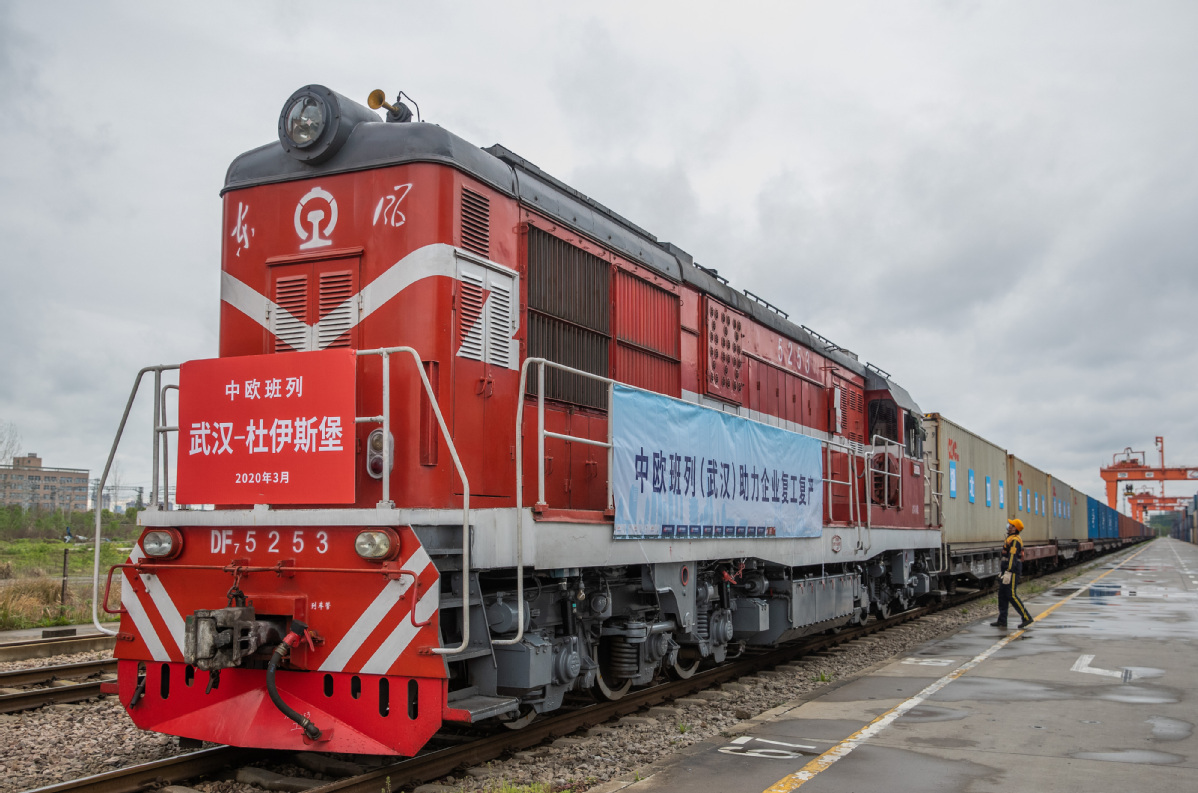The freight train that arrived in the Parisian rail hub of Valenton in early January wasn’t an especially large one—at 34 containers, it carried just 20% of the load of a typical intermodal freight train. But it was featured on CNN Business and in other business media because it had traveled 6,000 miles from Xian China and represented a growing trend in China-Europe supply chains: shifting a portion of container traffic away from pricey and congested ocean shipping lanes to rail.
“Once unusual, long-haul train freight shipments between China and Europe have become much more common during the pandemic as companies that need to move goods between the huge economies look for alternatives to snarled and expensive air and sea routes,” wrote CNN.
Part of what is often called The New Silk Road, the freight rail network between France and China isn’t new but was initiated in 2011, according to CNN. It’s growing dramatically however. A spokesperson for France’s national rail operator SCNF reported that five years ago, eight freight trains from China arrived at the Valenton hub daily; that number has increased to 18 to 20 today.
And France isn’t the only European country with growing rail links to China. Germany, which imports large amounts of auto parts from China, has 10 rail lines connecting Hamburg, Duisburg and other industrial hubs to Chengdu, Shenzhen and other Chinese cities, according to Le Figaro.
Recent developments portend even more growth in The New Silk Road rail network. In June 2021, the direct connection between Xian and Valenton was created. And in November 2021, this rail-trade route reached other milestones, adding new drop-off points in Lyons and Bordeaux, and hauling its first China-bound load—containers of high-end furniture, linen products, cosmetics and wine, according to RailFreight.com.
Business media report different estimates of the price differential between rail and ocean shipping for China-Europe supply chains. Le Figaro quotes French officials’ estimates that rail shipping between China and France costs €13,000 per container while ocean shipping costs €10,000; CNN averages a basket of international ocean shipping rates at $9,400 (€8,300) and puts the China-Europe trip at just $8,000 (€7,050). CNN also reports that European companies shipping to China receive a subsidy from the Chinese government that cuts their costs to as little as $2,000 (€1,750) per container, while Le Figaro reports a more modest subsidy that takes the price down by €4,000 ($4,550) from standard rates (which it estimates at €13,000).
The big advantage in shipping either direction is the faster transit time: as fast as 25 days for rail vs. the typical 70-day shipping time by ocean. However, that 45-day advantage is typically reduced substantially by delays. The load that CNN monitored took nearly 40 days due to “traffic on the tracks, lengthy customs checks at the Polish border and a shortage of train drivers in Germany caused by the pandemic.” CNN also notes the vast capacity advantages of container ships over trains: while the largest ships can haul about 20,000 containers, trains are generally limited to several hundred.
It’s worth mentioning that the rail operator—Xi’an International Inland Port Multimodal Transportation Co., LTD—claims an average transit time of 40 days between Xian and Valenton, and it looks to optimize its operations and find “alternative solutions” to bring the transit time down to 25 days, according to RailFreight.com. RailFreight.com also reports that other Chinese export hubs including Hefei and Shanxi have launched regular trains to France, and Shijiazhuang had planned to establish a direct rail link with Valenton by the end of 2021.
Le Figaro also reports that at the Polish border—one of two points on the Xian-Valenton line where loads must be switched to different trains due to the wider gauge of Soviet-era railways—new docks for unloading and reloading goods are being built to expand capacity to 25 or 30 trains per day on the Xian-Valenton line. “C’est le prix” (this is the price) of making rail a real alternative to ocean shipping for China-Europe trade, according to the newspaper.





